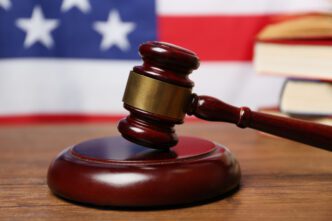In an unexpected turn of events, Camden Lee, a 16-year-old from Brooklyn, found himself at the center of a police misidentification, accused of a mass shooting during a popular parade.
Camden Lee, who had just turned 16, was abruptly thrust into a nightmare when his image circulated across New York Police Department’s social media. The post erroneously identified him as the suspect in a shooting incident at the West Indian American Day Parade. This incident tragically claimed a life and injured four others. Lee recalls viewing the post, seeing the NYPD logo next to his image with the term ‘suspect wanted for murder,’ and feeling his world blur around him.
The police, after a hasty internal review, conceded their error. They met with Lee and his lawyer, refrained from pressing charges, and discreetly removed his photograph from their public platforms. However, they did not issue a public retraction, leaving Lee and his family vulnerable and seeking answers about the department’s processes for retracting misinformation. This situation has intensified focus on the NYPD’s social media practices, already under critique for prior missteps.
When the mistaken identity was realized, Lee’s mother, Chee Chee Brock, expressed her deep disappointment in the law enforcement she once trusted. She highlighted, “I raised my kids to admit when they made a mistake. If you can blame an innocent kid for murder, what else can you get away with?” Their faith in the system has been profoundly shaken, especially given Brock’s older son is part of the police force.
Confusion stems from how Lee was identified initially. On the day of the shooting, Lee attended a football practice before briefly stopping at the parade, only to leave in shock as gunshots rang out and a friend was injured. The surveillance image captured at this moment showed him in a hoodie and shorts, a far cry from the description given by authorities of a suspect in his 20s wearing a paint-stained shirt.
Kenneth Montgomery, the attorney who swiftly intervened to prevent any formal charges against Lee, criticized the NYPD’s casual attitude concerning the mistake. He highlighted the serious implications such an error has on a young person’s life and called for accountability in the NYPD’s communication strategy. Despite their acknowledgment of the error, the photograph had already been widely disseminated, causing Lee to face unwarranted public attention and threats.
This unwanted exposure prompted Brock to relocate her family temporarily to avoid potential gang retaliation. The ordeal has had a tangible impact on Lee’s education, evident from the drop in his grades. Back in Brooklyn, the family continues to live under strained caution, with Brock limiting Lee’s movements out of concern for his safety.
Tensions within the NYPD during this period further complicated the scenario, with the police commissioner stepping down amid unrelated controversies. Critics like attorney Wylie Stecklow, who represents the Lee family, argue that the department’s failure to clarify the mistake raises significant concerns about accountability and future protocols.
As the NYPD increases rewards for information regarding the actual perpetrator, the original error lingers. The unduly circulated image of Lee re-emerged in media outlets, renewing public scrutiny and overshadowing the department’s efforts to shift focus. Lee fears the perpetual association with the misidentification will continue affecting his life, hindering his ability to move freely and partake in everyday activities without stigma.
As Camden Lee and his family seek closure, the incident serves as a sobering reminder of the critical need for accurate information dissemination by law enforcement and the ongoing impact of digital misidentification on innocent individuals.






